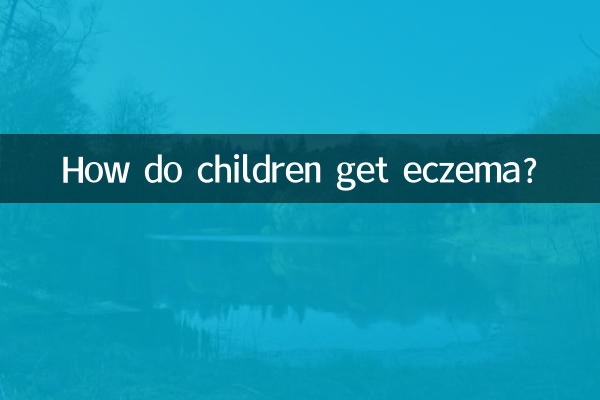How do children get eczema?
In recent years, the incidence of eczema in children has gradually increased, becoming a focus of concern for parents. Eczema is a common skin inflammation, mainly characterized by symptoms such as skin redness, itching, and scaling. So, how do children get eczema? This article will analyze the causes of eczema from multiple perspectives and provide structured data to help parents better understand this issue.
1. The main causes of eczema in children

The causes of childhood eczema are multifaceted, including genetic factors, environmental factors, immune system abnormalities, and impaired skin barrier function. Here are some common triggers:
| Type of cause | Specific performance |
|---|---|
| genetic factors | Children with a family history of allergies (such as asthma, allergic rhinitis) are more likely to develop eczema |
| environmental factors | Exposure to allergens (such as dust mites, pollen, pet dander) or chemical irritants (such as detergents, fragrances) |
| Immune system abnormalities | The immune system overreacts, causing skin inflammation |
| Impaired skin barrier function | The skin's natural moisturizing factors are reduced and water loss is increased. |
2. Age groups with high incidence of eczema in children
The incidence of childhood eczema varies in different age groups. The following are statistics on the age groups with the highest incidence of eczema in children among hot topics in the past 10 days:
| age group | Incidence | Common symptoms |
|---|---|---|
| 0-1 years old | about 60% | Redness, swelling and itching of face and scalp |
| 1-3 years old | about 30% | Dry and flaky skin on the joints of the limbs |
| 3 years and above | about 10% | Localized skin thickening and pigmentation |
3. Common causes of eczema in children
According to the analysis of hot content on the Internet in the past 10 days, the following are some common causes of eczema in children:
| Trigger Category | specific triggers | Precautions |
|---|---|---|
| dietary factors | Allergenic foods such as milk, eggs, seafood, etc. | Gradually introduce complementary foods and observe allergic reactions |
| climatic factors | Dry, cold or hot and humid environments | Keep indoor humidity appropriate and avoid extreme temperatures |
| contact stimulus | Rough clothing, detergent residue, soap, etc. | Choose pure cotton clothing and use mild detergent |
| psychological factors | Stress, anxiety, mood swings | Keep children emotionally stable and avoid excessive stress |
4. How to prevent and relieve eczema in children
Preventing and alleviating eczema in children requires a multi-faceted approach. Here are some practical suggestions:
1.Moisturizing care:Use a non-irritating moisturizer daily, especially immediately after bathing, to strengthen your skin's barrier function.
2.Avoid allergens:Minimize exposure to known allergens such as dust mites, pollen, pet dander, etc.
3.Eat properly:For children prone to allergies, parents should cautiously introduce foods with high allergy risks and observe whether there are any adverse reactions.
4.Comfortable to wear:Choose breathable, soft cotton clothing to avoid skin irritation from chemical fibers or rough fabrics.
5.Medical consultation:If the symptoms of eczema are severe or recurring, you should seek medical treatment in time and use medication under the guidance of a doctor.
5. Summary
The causes of childhood eczema are multifactorial, including genetic, environmental, immune and skin barrier function factors. By understanding these triggers, parents can better prevent and manage eczema in children. If your child develops symptoms of eczema, it is recommended to take prompt care and seek professional medical help if necessary.

check the details

check the details